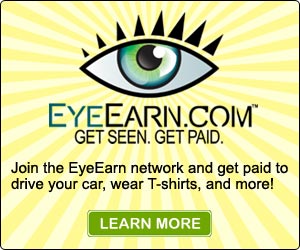“There are managers so preoccupied with their e-mail messages that they never look up from their screens to see what’s happening in the non-digital world.”
Dr. Mihaly Csikszentmihalyi,
author of Flow and Creativity
author of Flow and Creativity
For most businesspeople, e-mail has become the most common form of written communication. Because many workers spend most of the day “wired” to computers, e-mail is the only way to reach them quickly and reliably.
In general, people use e-mail to quickly exchange time-sensitive information. E-mail is easy to use and removes the headache of printing out letters and stuffing envelopes. E-mail potentially enables managers to get more done in a single day than they would by chasing down the same information via phone or fax or waiting for letters to arrive in the mail.
E-Mail, the most common thing in today's world, is the main part of Digital Communication. Throughout the following some blog, we will discuss about e-mail, its importance, technique to write e-mail professionally.
COMMUNICATING VIA E-MAIL
E-mail stands for electronic mail, but you don’t need a wall outlet to be plugged in to work correspondence. In this wired world, your e-mail in-box no longer resides solely in your desktop computer, but instead travels wherever you, your laptop, or your hand held device go. E-mail is as likely to be crafted on a Black Berry during a bumpy cab ride as on a laptop in a quiet home office. The ease with which people can reach others through e-mail has resulted in far more information being exchanged than in the era of typewritten letters. This volume has its advantages and disadvantages.
E-mail is the most pervasive and useful communication tool to emerge since the telephone. A 2006 survey by the staffing company Office Team found that 71 percent of executives use e-mail as their preferred method of communication, whereas only 27 percent were doing so in 2001. Employees in most businesses use e-mail internally to set up meetings, ask for information, and exchange opinions and ideas. Organizations use e-mail externally to share information with business partners, investors, or customers. E-mail enables companies to swap vital information with suppliers and vendors, and makes it possible for geographically dispersed employees to collaborate in ways never before possible. Both you and your staff have little choice but to learn to express yourself effectively via e-mail.
Future Prediction: The Big Picture
According to Bill Gates, founder of Microsoft, in the future, new technologies will make communication a multi-sensory experience of sight and sound. “Unified communications technologies will eliminate the barriers between the communications modes—e-mail, voice, web conferencing and more—that we use every day. They will enable us to close the gap between the devices we use to contact people when we need information and the applications and business processes where we use that information. The impact on productivity, creativity and collaboration will be profound,” predicts Gates.
In general, people use e-mail to quickly exchange time-sensitive information. E-mail is easy to use and removes the headache of printing out letters and stuffing envelopes. E-mail potentially enables managers to get more done in a single day than they would by chasing down the same information via phone or fax or waiting for letters to arrive in the mail.
E-Mail, the most common thing in today's world, is the main part of Digital Communication. Throughout the following some blog, we will discuss about e-mail, its importance, technique to write e-mail professionally.
COMMUNICATING VIA E-MAIL
E-mail stands for electronic mail, but you don’t need a wall outlet to be plugged in to work correspondence. In this wired world, your e-mail in-box no longer resides solely in your desktop computer, but instead travels wherever you, your laptop, or your hand held device go. E-mail is as likely to be crafted on a Black Berry during a bumpy cab ride as on a laptop in a quiet home office. The ease with which people can reach others through e-mail has resulted in far more information being exchanged than in the era of typewritten letters. This volume has its advantages and disadvantages.
E-mail is the most pervasive and useful communication tool to emerge since the telephone. A 2006 survey by the staffing company Office Team found that 71 percent of executives use e-mail as their preferred method of communication, whereas only 27 percent were doing so in 2001. Employees in most businesses use e-mail internally to set up meetings, ask for information, and exchange opinions and ideas. Organizations use e-mail externally to share information with business partners, investors, or customers. E-mail enables companies to swap vital information with suppliers and vendors, and makes it possible for geographically dispersed employees to collaborate in ways never before possible. Both you and your staff have little choice but to learn to express yourself effectively via e-mail.
Future Prediction: The Big Picture
According to Bill Gates, founder of Microsoft, in the future, new technologies will make communication a multi-sensory experience of sight and sound. “Unified communications technologies will eliminate the barriers between the communications modes—e-mail, voice, web conferencing and more—that we use every day. They will enable us to close the gap between the devices we use to contact people when we need information and the applications and business processes where we use that information. The impact on productivity, creativity and collaboration will be profound,” predicts Gates.



















